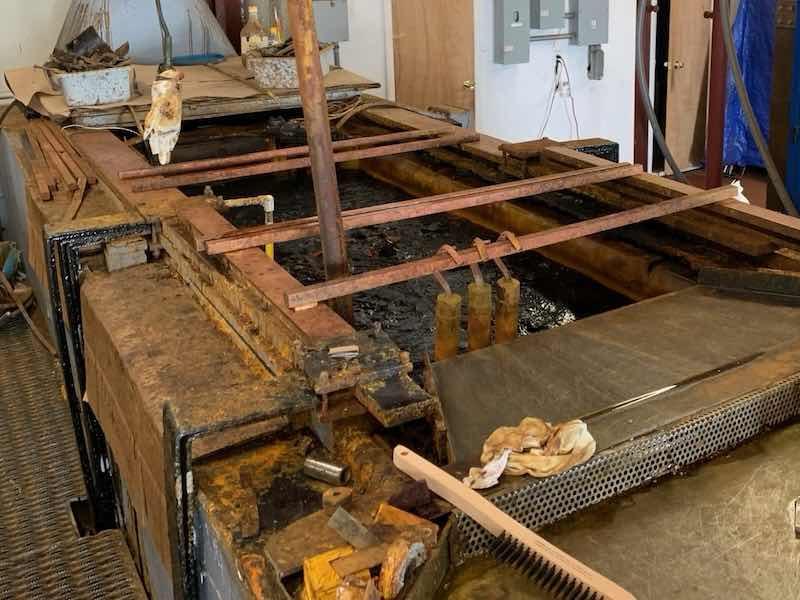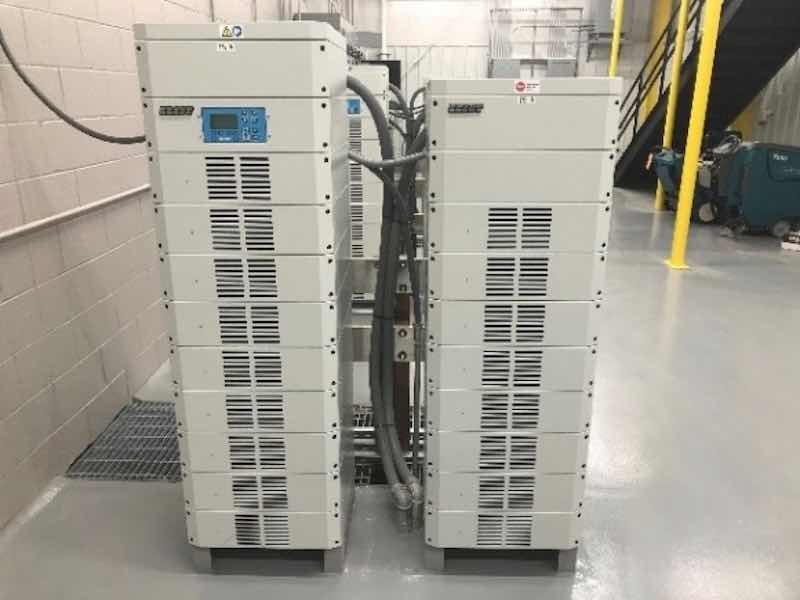Some job and captive shops are working well below their potential by using less-than-ideal operating conditions.
 Eric Svenson Sr.This leads to a significant loss in efficiency, decreased quality, and lower production volumes. Diminished profits and limited growth potential are the end result. The takeaway is that optimizing and controlling these points should be a top priority.
Eric Svenson Sr.This leads to a significant loss in efficiency, decreased quality, and lower production volumes. Diminished profits and limited growth potential are the end result. The takeaway is that optimizing and controlling these points should be a top priority.
Some of the operating conditions that should be enhanced include:
- The bath chemistry is being used.
- Operating temperatures.
- Rectification and current densities.
- Anoding and fixturing.
- Bath agitation methods.
- Stop-off techniques.
- Surface finishing procedures.
- Reverse etching and activation techniques.
- Metallurgical conditioning.
- Rinsing and waste management.
Other factors that affect the operations performance involve process controls, production documentation, and worker knowhow.
The plating department has several important issues to review before successfully plating their parts with hard chrome. This is especially true if these vary in base metal properties or configuration. Making assumptions or using incorrect processing methods always causes expensive rework with diminished efficiency.
Recent advancements in these areas are available for those looking to improve performance. Well managed shops found that implementing these changes made a significant improvement in their operation that resulted in better quality, higher efficiency and lower production costs.
Hard chrome operations that operate with high-efficiency have learned to control the variables involved with deposit performance, process control and worker education. Following are some of the details on these critical areas.
Deposit Performance
 A system in need of an upgrade.Issues like plating speed, throwing power, deposit hardness, wearability, and corrosion resistance are primarily controlled by the plating bath chemistry. Modern hard chrome processes like the newer triple catalyst bath greatly outperform the old 100:1 standard bath in all of these important areas. The triple catalyst chrome bath plates are much faster, their deposit is much harder, and they provide improved wearability. The deposit has a microcracked structure, which reduces stress and increases its corrosion resistance.
A system in need of an upgrade.Issues like plating speed, throwing power, deposit hardness, wearability, and corrosion resistance are primarily controlled by the plating bath chemistry. Modern hard chrome processes like the newer triple catalyst bath greatly outperform the old 100:1 standard bath in all of these important areas. The triple catalyst chrome bath plates are much faster, their deposit is much harder, and they provide improved wearability. The deposit has a microcracked structure, which reduces stress and increases its corrosion resistance.
The Triple Catalyst bath is non-etching and provides enhanced impurity resistance. In addition, the greatly increased plating speed produces 50% more parts per hour, which increases profits, so there really isn’t any valid reason to continue using the older standard 100:1 bath.
Process Control
 An updated efficient plating system.Peak performance also requires control of the Bath Chemistry, the Operating Conditions, and Bath Impurity Levels. It is highly recommended that hard chrome operations have a small laboratory set-up to at least test the chromic acid and sulfate levels. Weekly analysis is generally sufficient except for larger and high-output operations. Bath samples should also be sent to an outside laboratory, typically on a monthly basis, for backup analysis and testing for the catalyst and impurity levels. A reputable laboratory that specializes in hard chrome technology should be used.
An updated efficient plating system.Peak performance also requires control of the Bath Chemistry, the Operating Conditions, and Bath Impurity Levels. It is highly recommended that hard chrome operations have a small laboratory set-up to at least test the chromic acid and sulfate levels. Weekly analysis is generally sufficient except for larger and high-output operations. Bath samples should also be sent to an outside laboratory, typically on a monthly basis, for backup analysis and testing for the catalyst and impurity levels. A reputable laboratory that specializes in hard chrome technology should be used.
Some operations never check their chrome and sulfate levels, or they rely on an inaccurate Baumé reading and make ‘over-the-side’ sulfate additions. This type of bath control is reckless and always leads to quality and production declines.
Problems also arise when too many employees are tasked with bath maintenance. This is best tasked to a single employee; the plating foreman is usually best suited for taking the bath samples, performing the analysis, and making any needed chemical additions.
Other process control concerns involve ensuring the bath temperatures, current densities, and agitation systems are at their optimum levels and are controlled for uniformity. Equipment maintenance and controlling bath impurity levels within their recommended range is also important for high-quality hard chrome deposits and lower operating costs.
Worker Education
 Modern switch-mode rectifiers.Another critical area is the knowledge base of the workforce. It’s hard to quantify which item is most critical, but worker knowledge and know-how certainly is at the top of the list. An in-depth understanding of the process is essential for today’s hard chrome operations.
Modern switch-mode rectifiers.Another critical area is the knowledge base of the workforce. It’s hard to quantify which item is most critical, but worker knowledge and know-how certainly is at the top of the list. An in-depth understanding of the process is essential for today’s hard chrome operations.
The workforce typically consists of a plating supervisor, a lead plater, and one or more plating helpers. The plating supervisor is generally part of the management team and should be the most knowledgeable on the overall process.
A lack of process know-how and processing techniques ends up costing those operations more than they realize. The encouraging news is that a trained workforce always provides improvements in product quality, higher production rates, lower operational costs, and faster deliveries. This leads directly to the bottom line with satisfied customers and increased market share.
Obtaining accurate process information and worker know-how was hard to come by. It was mostly provided by word of mouth and handed down from one employee to another. This results in critical information being lost, causing a decline in productivity and a loss of product quality.
It is ever more difficult to find and retain hard chrome platers with adequate knowledge about the process. On a positive note, a specialized assistance program that is specific for hard chrome is available for companies wishing to improve or upgrade their operation.
Plating Resources, Inc. provides a technical support package specifically addressing this shortfall, and it can be tailored to a company’s specific needs, including:
- Solving specific production or quality problems.
- An operation review with suggestions for improvement.
- Operator training program for workers and supervisors.
The training program uses our recently developed Hard Chrome University program that addresses all aspects of the art and science. It provides the know-how employees need for today’s competitive environment. It is applicable to both new hires and seasoned workers.
Summary
Deposit performance, process control, and the worker knowledge base should all be at their peak level. Hard chrome operations will lag and decline if any of these important areas are not addressed. Optimizing and maintaining these items is a management function that should be taken seriously; consider reviewing and appraising your hard chrome operation.
The place to start is with an on-site process review while considering the need for additional employee training. The next step might include implementing the suggested improvements, adopting different procedures, or even upgrading some equipment components.
Eric Svenson Sr. is CEO of Plating Resources, www.Plating.com. He is also a Master CEF, IUSF, and can be reached at PlatingResources@Yahoo.com. Please contact Vicky@Plating.com with any questions or if you wish to explore these suggestions further.



































